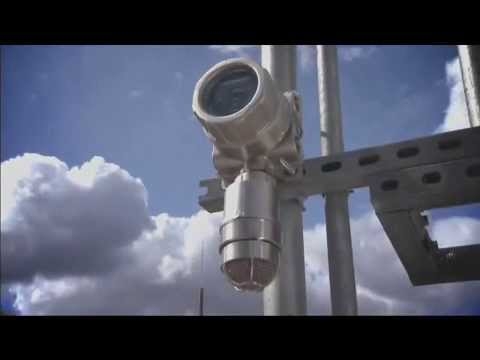Description
The FlexSonic® Acoustic Gas Leak Detector – comprised of the AC100 Acoustic Sensor and the ATX10 Acoustic Transmitter is designed to recognise the unique frequency content of events such as gas leaks. When a pressurised gas leak occurs, the frequency content of the sound being generated extends beyond the audible portion of the spectrum into the ultrasonic region (above 20 kHz).
Acoustic detection is less susceptible to environmental factors (such as high winds) that can degrade the ability of traditional sensing technology based on gas concentration to detect the presence of a leak.
The FlexSonic® Acoustic Gas Detector is ideally suited for locations where traditional technologies are challenged, such as outdoor and unmanned operations
When combined with line of sight and/or point gas detectors, the additional layer of protection provided by the FlexSonic Acoustic Detector offers the ultimate solution for gas leak detection.
FUNCTIONAL
- Analyses 24 discrete ultrasonic bands
- Almost instantaneous response
- Rugged construction for harsh outdoor applications – Explosion-proof 316 stainless steel housing
- Non-contact gas leak detection
- Stand-alone capability with the ATX10 Transmitter
- 4-20 mA output combined with HART
- Can detect small gas leaks at or below 6 bar (87 psi)
- Extensive data logging with removable storage that records the acoustic spectrum
- Wide acoustic dynamic range
FLEXIBLE
- Superior false alarm discrimination with patented technology
- Functions with all gas types
- Ideally suited for locations where traditional technologies are challenged, such as outdoor and unmanned operations
- Adjustable detection range
- Large detection coverage area
RELIABLE
- Certified SIL 2 Capable for all gas types
- Globally approved Explosion-proof 316 stainless steel housing
- Integrated Acoustic Integrity Check (AIC)
- Minimum maintenance required
- No routine calibration required
- Not affected by poisoning
- Fail-safe operation
- 3-year Warranty
Sound Fundamentals
When a pressurised gas leak occurs, the intensity of the sound generated by a leak is determined by several factors including pressure, leak rate, gas viscosity, and distance from the leak source.
To explain acoustic detection methods, some common terms need to be discussed. One is frequency. Frequency is the parameter that describes the high and low pitches in acoustic sound.
The human ear can hear both high and low frequencies, but only within a certain frequency range typically from 20 Hz to 20000 Hz.
Frequencies from 20 kHz to 80 kHz are called ultrasonic frequencies. Pressurised gas leaks emit airborne acoustic sound within this ultrasonic frequency range. However, the human ear cannot hear sound produced in this frequency range.
To listen for sound, the Flexsonic acoustic gas detector uses a high fidelity microphone and can detect sound across the whole acoustic sound range, but for gas leak detection it is designed to ignore the audible frequencies and only sense and recognise ultrasonic frequencies between 20Khz and 80 kHz.
Combined with Conventional Methods
When combined with line of sight and/or point gas detectors, the additional layer of gas detection compliments conventional methods to increase safety and reduce risk. The FlexSonic Acoustic Gas Leak Detector offers the ultimate proven solution for gas leak detection.
Additional Information
| Weight | 8.5 kg |
|---|---|
| Brand | |
| Configuration |
Product Downloads
Talk with the Experts
Contact us - Our team of application specialists can assist you with system design, installation, maintenance, and repair. As a systems integrator, we provide end-to-end support to ensure your facility has a reliable and effective gas detection system in place.
Sign up for more information - For more information on protecting your staff from the dangers of gas leaks, sign up for our emails.







